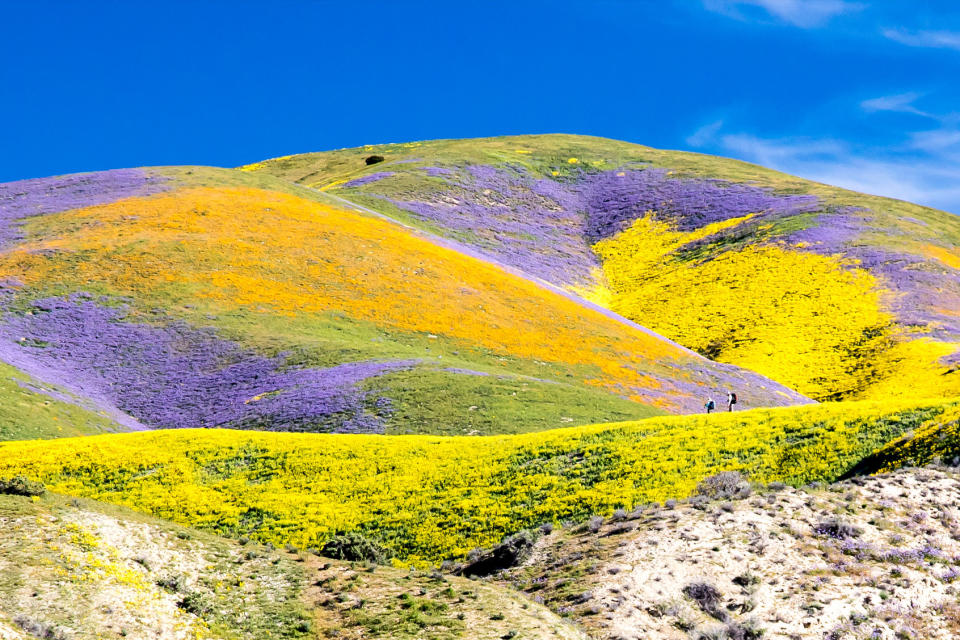Bureau of Land Management orders removal of oil wells in California's Carrizo Plain

Record-breaking rains may have flooded California this year, but they also provided enough water for one of the state's most dazzling wildflower displays to flourish into a "superbloom" so big it could be seen from space. The Carrizo Plain National Monument, located about 170 miles northwest of Los Angeles, is the largest expanse of grassland remaining in the state and blooms into a brilliant mosaic of explosive yellow, purple, blue and orange flowers each spring. But about a dozen oil wells have also taken root in the Carrizo Plain, sometimes called the "Serengeti of California."
On Wednesday, the U.S. Bureau of Land Management directed oil companies to shut down 11 dormant wells there following public outrage and a lawsuit disputing the Trump administration's decision to permit the wells in the first place. In a legal agreement between conservation groups and the BLM reached last year, it was decided that the wells and the infrastructure supporting them would be removed by August 2028.
In 2021, the Biden Administration announced the suspension of new oil and gas leases on public lands only to reverse the decision the following year, although the acreage of available land for leasing was significantly reduced.
In response to the removal of wells in the Carrizo Plain, Ileene Anderson, a senior scientist at the Center for Biological Diversity, said in a press release: "This is a place for wildflowers, California condors and kit foxes, not oil wells. It's wonderful to see the fossil fuel era coming to an end here, which will benefit all the rare plants and animals of this stunning landscape."
